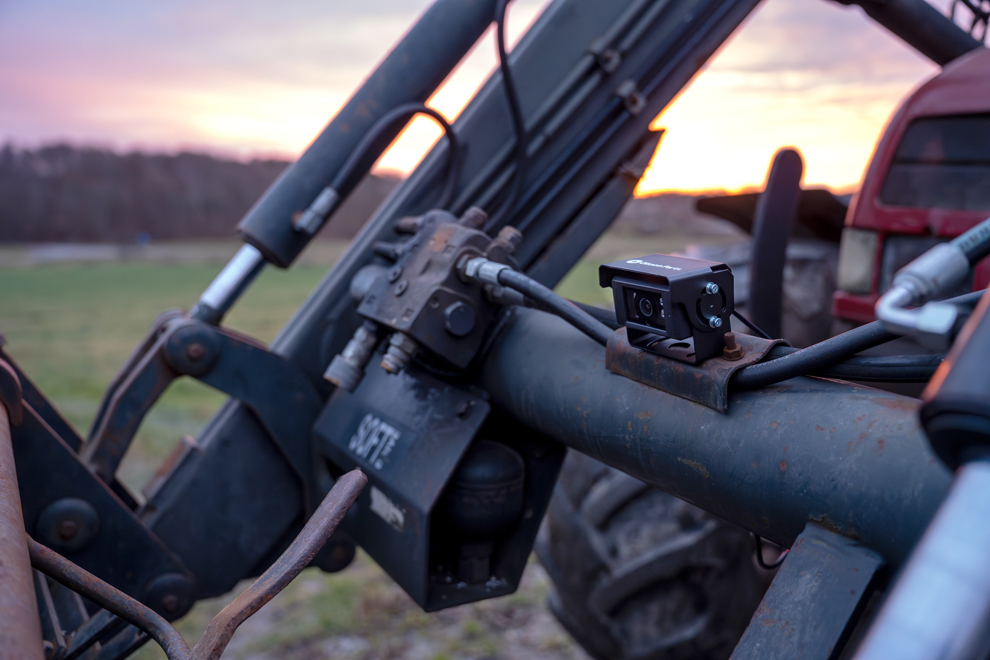
All you need to know about reversing cameras – tips from the expert
Reversing cameras have become an indispensable aid in everything from private cars to construction machinery. Whether you drive a truck, a tractor or a motorhome, a reversing camera provides added safety and more agile manoeuvring. But what do you need to consider before making a purchase? And how do you know which model suits your needs? We’ve spoken to our product specialist Stefan Ekblad to determine the fundamentals.
Why should I use a reversing camera?
A reversing camera helps the driver to see behind the vehicle in real time via a display in the cab. This reduces the risk of accidents, saves time and improves the working environment.
– Many accidents occur during reversing, especially with large vehicles. With a camera, however, you can see what’s going on straight away and you don’t have to get out of your car or cab to check. But it’s not just a matter of convenience – it’s about working both smarter and safer, says Stefan Ekblad.
How the system works
The camera is mounted on the rear of the vehicle and connected to a screen. Both wireless and wired systems are available.
• Wireless: easier installation, especially on long vehicles.
• Wired: stable and interference-free connection.
Choose a wireless reversing camera if you want a quick installation process, for example on trailers, motorhomes or attachments that are moved frequently. Cable is best for fixed installation and in harsh environments where a stable image is required.
– On trailers and attachments you move from one vehicle to another, wireless systems are unbeatable in terms of their agility.
Questions you should ask yourself before buying a reversing camera:
• Which vehicle is the camera going to be fitted to?
• Do I want to be able to record video?
• Do I need to record audio?
• Is one camera enough, or do I need several?
• Is it important for the system to be EMC approved?
Can you install a reversing camera system yourself?
– Yes, that’s usually no problem at all. Most systems come with clear installation instructions and wiring diagrams that make installation easier. For those who need additional support, help is often available from the supplier or technical support. The most important thing is to choose a reversing camera system that is tailored to your vehicle and your needs, to ensure a smooth installation and optimal results.
Multiple screens, HD or not
Reversing camera systems can also be customised in a number of ways. For example, you can connect multiple cameras to the same screen in order to show different angles – a feature that is particularly useful when e.g. transporting horses or on construction machinery. Another thing to consider when selecting a reversing camera is whether you need one in HD. Stefan explains:
– HD stands for ‘high definition’ and means high resolution image quality. HD systems are future-proofed and provide sharper, more detailed images that make it easier to spot small but important details. This is particularly useful in demanding working environments, and helps to increase both precision and safety.
Reversing camera systems are also available with several screen sizes, with 7 inches being the most common and practical size. However, there are also smaller and larger options for different vehicles and different needs, such as 5, 9 and 10 inches.
A complete reversing camera package always includes a camera, a screen and all accessories required for smooth installation and commissioning. The systems are adapted for many types of vehicles, from trailers and motorhomes to tractors and construction machinery. It is also possible to combine multiple cameras, for example one inside a horsebox and one at the rear for maximum visibility.
– With the right package and guidance, everyone can get a solution that increases both safety and comfort when reversing.
A reversing camera helps you to:
• improve safety
• detect hidden obstacles
• enjoy better visibility when performing difficult manoeuvres
• save time and avoid having to get out of the cab unnecessarily
//